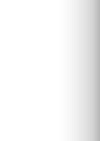

1- Department of Medical Mycology, School of Public Health, Tehran University of Medical Sciences, Tehran, Iran.
2- 1-Department of Medical Mycology, School of Public Health, Tehran University of Medical Sciences, Tehran, Iran. 2- Food Microbiology Research Center, Tehran University of Medical Sciences, Tehran, Iran. , sjhashemi@tums.ac.ir
3- Department of Health, Rescue and Treatment of IR Iran Police Force, Tehran, Iran.
4- Department of Medical Mycology, School of Public Health, Tehran University of Medical Sciences, Tehran, Iran
Abstract: (5515 Views)
Aims: In imbalanced conditions, Candida species colonization as a normal microflora of human skin and some mucosal surfaces is replaced by invasive forms (budding yeast cells, pseudohyphae, and true hyphae). This study aimed to investigate the frequency of Candida species and candidiasis with emphasis on the presence and propensity of different Candida species for pseudohyphae and true hyphae formation in clinical samples taken from various clinical forms of candidiasis.
Materials & Methods: In this cross-sectional study (2018 to 2019), sampling was done from 492 patients suspected to candidiasis, referred to the Medical Mycology Laboratory. Employing direct microscopy and culturing methods, the Candida species were identified using morphological and biochemical characteristics and also PCR-RFLP and DNA sequencing.
Findings: From a total of 96 candidiasis patients, 44.9% were identified with superficial-cutaneous and 55.1% with visceral candidiasis. The most clinical strains were isolated from fingernail scrapings (33.2%), followed by bronchoalveolar lavage samples (17%). The mycelium was found in 55.2% of the cases, and the highest frequency was related to the nail specimens (34%, p <.05). C. albicans was the predominant species forming mycelium (69.8%), followed by C. tropicalis, but no mycelium was found in C. guilliermondii cases. Mycelium formation was observed more in patients with an underlying disease such as AIDS and organ transplantation (p <.05).
Conclusion: Non-albicans Candida species have also the propensity to induce an invasive form of mycelial in the skin and to increase internal organs temperature, exacerbating clinical symptoms. This finding is important for choosing proper antifungal treatments and should be taken into account by clinicians.
Article Type:
Original Research |
Subject:
Mycology Received: 2019/07/5 | Accepted: 2019/08/28 | Published: 2019/09/8































 , Seyed jamal Hashemi hezaveh *
, Seyed jamal Hashemi hezaveh *  2, Roshanak Daie Ghazvini1
2, Roshanak Daie Ghazvini1  , Mahdi Zareei3
, Mahdi Zareei3  , Zahra Rafat4
, Zahra Rafat4 
